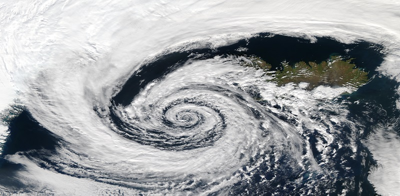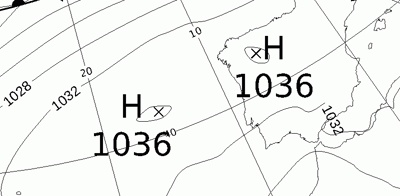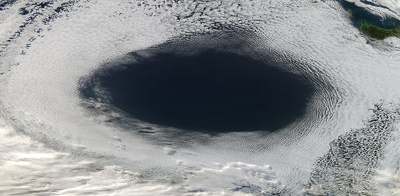DEFINITION:
- Is The Pressure Exerted By The Earth’s Atmosphere At Any Given Point, Being The Product Of The Mass Of The Atmospheric Column Of The Unit Area Above The Given Point And Of The Gravitational Acceleration At The Given Point.
- Also Called Barometric Pressure.
UNIT:
- Generally Measured In Units Of “Pascals” But Atmospheric Scientists Like To Express Pressure In Units Of “Bars”.
- 1 Bar = 100,000 Pascals.
- The Average Atmospheric Pressure At The Surface Of The Earth Is Approximately 1 Bar.
TYPES OF PRESSURE ON WEATHER MAP:
- Low-pressure Area / Depressions Or Cyclone.
- High-pressure Area Or Anticyclone.
LOW-PRESSURE AREA / DEPRESSIONS OR CYCLONE
DEFINITION:
Is A Region Where The Atmospheric Pressure At Sea Level Is Below That Of Surrounding Locations.
HOW DOES IT FORM:
- Low-pressure Systems Form Under Areas Of Wind Divergence That Occur In Upper Levels Of The Troposphere, Which Lowers Surface Pressures As Upward Motion Partially Counteracts The Force Of Gravity.
- Thermal Lows Form Due To Localized Heating Caused By Greater Sunshine Over Deserts And Other Land Masses. Since Localized Areas Of Warm Air Are Less Dense Than Their Surroundings, This Warmer Air Rises, Which Lowers Atmospheric Pressure Near That Portion Of The Earth’s Surface. Large-scale Thermal Lows Over Continents Help Create Pressure Gradients That Drive Monsoon Circulations.
- Low-pressure Areas Can Also Form Due To Organized Thunderstorm Activity Over Warm Water.
PROPERTIES:
- The Low Pressure Area Has Well Defined Center.
- It Is Associated With Un-settled Weather.
- Winds Blow In An Anti-clockwise Direction Around The Northern Hemisphere.
- Winds Blow In An Clockwise Direction Around The Southern Hemisphere.
- Depressions Are Aften Associated With Strong Winds And Heavy Rain.
- It Is Nearly Alawys Accompanied By Fronts.
PICTURE OF LOW PRESSURE:
HIGH-PRESSURE AREA OR ANTICYCLONE
DEFINITION:
Is A Region Where The Atmospheric Pressure At The Surface Of The Planet Is Greater Than Its Surrounding Environment.
HOW DOES IT FORM:
High-pressure Systems Form Due To Downward Motion Through The Troposphere, The Atmospheric Layer Where Weather Occurs. Preferred Areas Within A Synoptic Flow Pattern In Higher Levels Of The Troposphere Are Beneath The Western Side Of Troughs.
PROPERTIES:
- The High Pressure Area Has Less Well Defined Center Than The Low Pressure.
- It Is Associated With Settled Weather.
- Winds Blow In An Clockwise Direction Around The Northern Hemisphere.
- Winds Blow In An Anti-clockwise Direction Around The Southern Hemisphere.
- Anticyclones Can Bring:
- Warm And Sunny Weather In Summer.
- Cold And Foggy In Winter.



